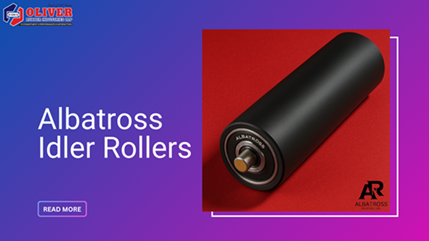How Property Developers in Abu Dhabi Are Enhancing Community Living Through Integrated Developments

The real estate landscape in Abu Dhabi is undergoing a significant transformation. Gone are the days when residential areas existed in isolation, separate from workplaces, retail outlets, parks, and entertainment venues. Today, property developers in Abu Dhabi UAE are investing in integrated community developments that serve more than just the purpose of providing shelter. These spaces are becoming ecosystems where residents can live, work, play, and thrive all within a well-planned environment. Through a holistic approach to urban planning, developers are reimagining city life and creating vibrant, connected neighborhoods.
The Rise of Integrated Developments
Integrated developments represent a growing trend in urban planning that merges residential, commercial, recreational, and sometimes even industrial elements into a single, cohesive development. In Abu Dhabi, these projects are fast becoming the standard rather than the exception.
These developments are designed to meet the needs of modern residents who value convenience, community, and sustainability. Instead of commuting long distances for work, groceries, or leisure activities, people can now access all of these within their communities. This approach not only reduces travel time but also decreases environmental impact and improves the overall quality of life.
The Role of Urban Planning in Community Well-being
Urban planning lies at the heart of any successful integrated development. By focusing on design and layout, planners ensure that spaces are both functional and aesthetically pleasing. Walkability, green spaces, transportation links, and accessibility are key considerations.
One of the most important aspects is pedestrian-friendly design. Developers in Abu Dhabi are creating neighborhoods with wide pavements, shaded walking paths, and designated cycling routes to encourage outdoor activity. Parks, playgrounds, and open spaces are thoughtfully incorporated, making it easier for families to enjoy a healthy lifestyle close to home.
Moreover, accessibility plays a huge role in enhancing community well-being. People of all ages and abilities need to navigate their neighborhoods easily. Developers are increasingly including ramps, elevators, and inclusive designs that cater to seniors and individuals with disabilities.
Mixed-Use Spaces: A Core Element
Mixed-use developments are central to the integrated living model. These projects often include residential units, office spaces, retail stores, gyms, cafes, and more—all within walking distance.
This blend of functionality supports community cohesion. For instance, a resident might live on the fifth floor of a building that houses a grocery store on the ground level and an office block next door. This level of convenience fosters a stronger sense of place and belonging.
In Abu Dhabi, this model is being widely adopted. Not only does it streamline daily activities, but it also encourages more sustainable habits like walking or cycling instead of driving. Residents find themselves engaging more with their community, meeting neighbors in shared spaces, and participating in communal events organized within these developments.
Sustainability at the Core
Environmental consciousness is another major component of integrated developments. Modern real estate and property development practices are placing strong emphasis on sustainable design, construction materials, and energy-efficient systems.
Abu Dhabi’s developers are leading the way by incorporating solar panels, energy-efficient lighting, water conservation systems, and waste management protocols into their projects. Landscaping is often done using native or drought-resistant plants to reduce water usage.
Public transportation links are also being integrated into these communities. With easy access to buses, metro stations, and cycling paths, residents can reduce their reliance on cars—cutting down on emissions and promoting a cleaner, healthier environment.
Furthermore, green buildings are now becoming a norm rather than a luxury. Certifications like Estidama Pearl Rating in Abu Dhabi are encouraging developers to adhere to eco-friendly standards, ensuring that sustainability is embedded in the very foundation of the project.
Community Facilities That Foster Interaction
Integrated developments are not just about infrastructure—they are about people. Community engagement and social interaction are at the forefront of modern urban living.
Developers are including community centers, co-working spaces, event halls, and recreational facilities like swimming pools, tennis courts, and gyms within these spaces. These amenities aren’t just extras—they play a crucial role in creating a vibrant, interactive community.
Additionally, schools and healthcare facilities are being included in the master plans of these developments. Having a school within walking distance provides peace of mind for parents and strengthens the bond between families within a neighborhood.
Healthcare facilities, such as clinics and pharmacies, offer immediate access to essential services. This is especially valuable for elderly residents or those with chronic health issues who benefit from having medical services nearby.
Smart Technology Integration
Another innovative aspect of real estate and property development in Abu Dhabi is the integration of smart technologies into community planning. Smart home features, such as intelligent lighting, automated climate control, and voice-activated systems, are now standard in many developments.
But the smart city approach goes beyond individual homes. Community-wide systems like smart parking, real-time security monitoring, and energy usage analytics are becoming common. Residents can pay bills, book community spaces, or report issues via dedicated mobile apps.
This high level of technological integration enhances the quality of life while also making community management more efficient. It offers transparency, reduces operational costs, and improves security across the development.
The Economic and Social Impact
The benefits of integrated developments extend beyond convenience and comfort. They also play a pivotal role in driving the local economy and fostering social cohesion.
For instance, the inclusion of retail and office spaces creates job opportunities within the community itself. Small businesses, startups, and freelancers benefit from affordable commercial spaces in thriving neighborhoods. This micro-economy supports the broader economy of Abu Dhabi while reducing the need for extensive commuting.
Socially, these developments encourage multiculturalism and inclusivity. With residents from diverse backgrounds sharing common spaces and community events, social harmony is cultivated naturally. This aspect is vital in a cosmopolitan city like Abu Dhabi, where different cultures coexist.
The Future of Urban Living in Abu Dhabi
Looking ahead, the role of property developers in Abu Dhabi UAE will be even more crucial in shaping the future of urban living. With population growth, urban migration, and changing lifestyle preferences, the demand for integrated living spaces will continue to rise.
Emerging trends such as modular construction, AI-based city planning, and the increasing use of renewable energy will further redefine what it means to live in a community. Developers must continue to evolve, adopting these innovations to meet the expectations of future generations.
Collaboration between urban planners, architects, environmental experts, and community stakeholders will be essential in this journey. Only through collective effort can Abu Dhabi achieve its vision of a smart, sustainable, and inclusive city.
Challenges and Considerations
Despite their numerous advantages, integrated developments are not without challenges. Balancing commercial viability with social and environmental responsibilities is a delicate act. Developers need to ensure that their projects remain affordable while still offering high-quality amenities.
Another challenge lies in long-term maintenance. As these communities age, maintaining infrastructure and services at a high standard becomes critical. This is where effective community management and resident engagement play a role.
Traffic management, zoning laws, and coordination with municipal authorities also require ongoing attention. Developers must work hand-in-hand with the government to ensure regulations are met and that the developments align with the broader urban planning goals of Abu Dhabi.
Final Thoughts
Integrated developments are redefining community living in Abu Dhabi. By combining residential, commercial, social, and environmental elements into one cohesive space, property developers in Abu Dhabi UAE are enhancing the quality of life for residents while promoting sustainability, inclusivity, and innovation.
These developments represent more than just real estate projects—they are living, breathing communities that reflect the aspirations of a modern, forward-thinking society. As real estate and property development continues to evolve, the focus must remain on creating spaces that not only house people but also nurture them.





